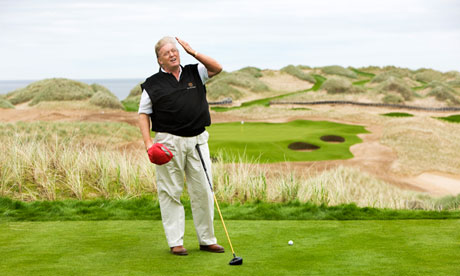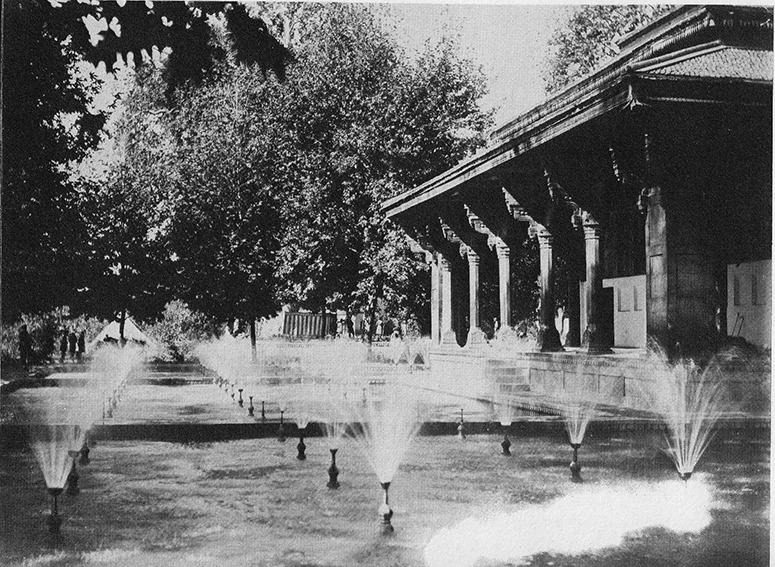
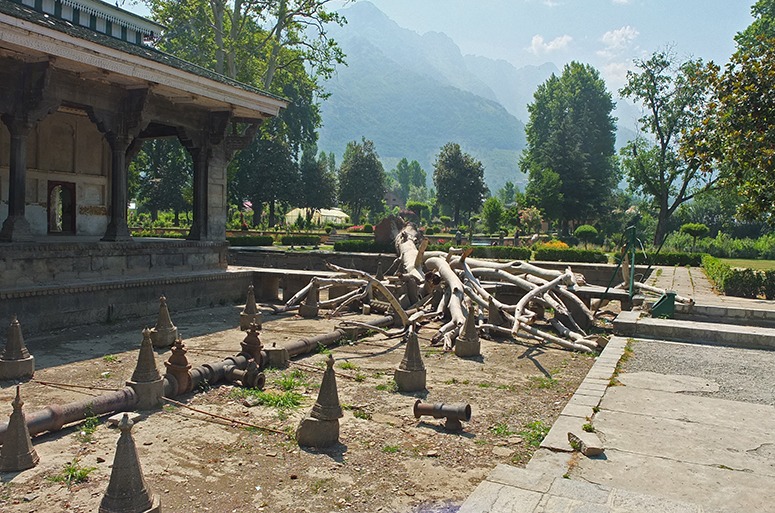
As a generalisation, the condition of historic gardens in most countries is getting better. They enjoy more expert attention, more visitors and more resources. Shalimar Bagh in Kashmir is an exception. When I saw it in 2006, it did not seem to be in quite as good condition as when Susan Jellicoe (black and white photo above) photographed it c1970. And when I saw it again in 2012 (colour photo, above) it seemed in even worse condition. Oddly, there were also far more visitors than in 2006. Does anyone know what the problem is? Lack of money? Lack of will? A concern for the bugs which enjoy rotting timber? A lack of concern for India’s Islamic heritage?
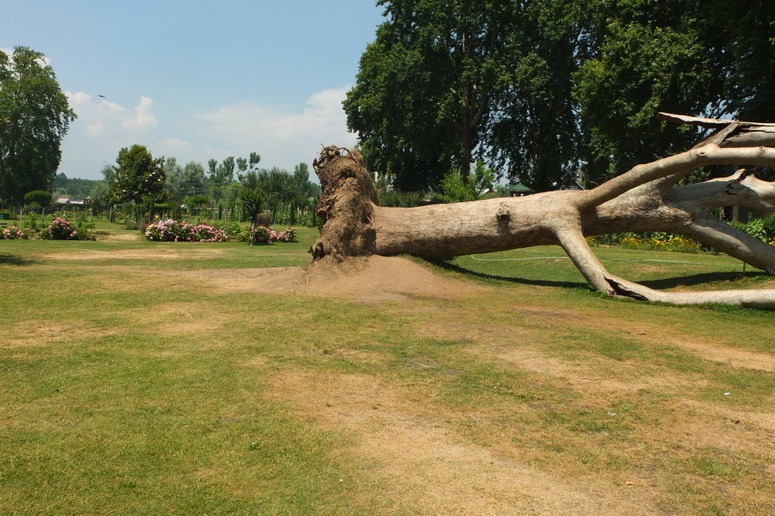
Yearly Archives: 2012
Orvieto, Italy, landscape and architecture then and now
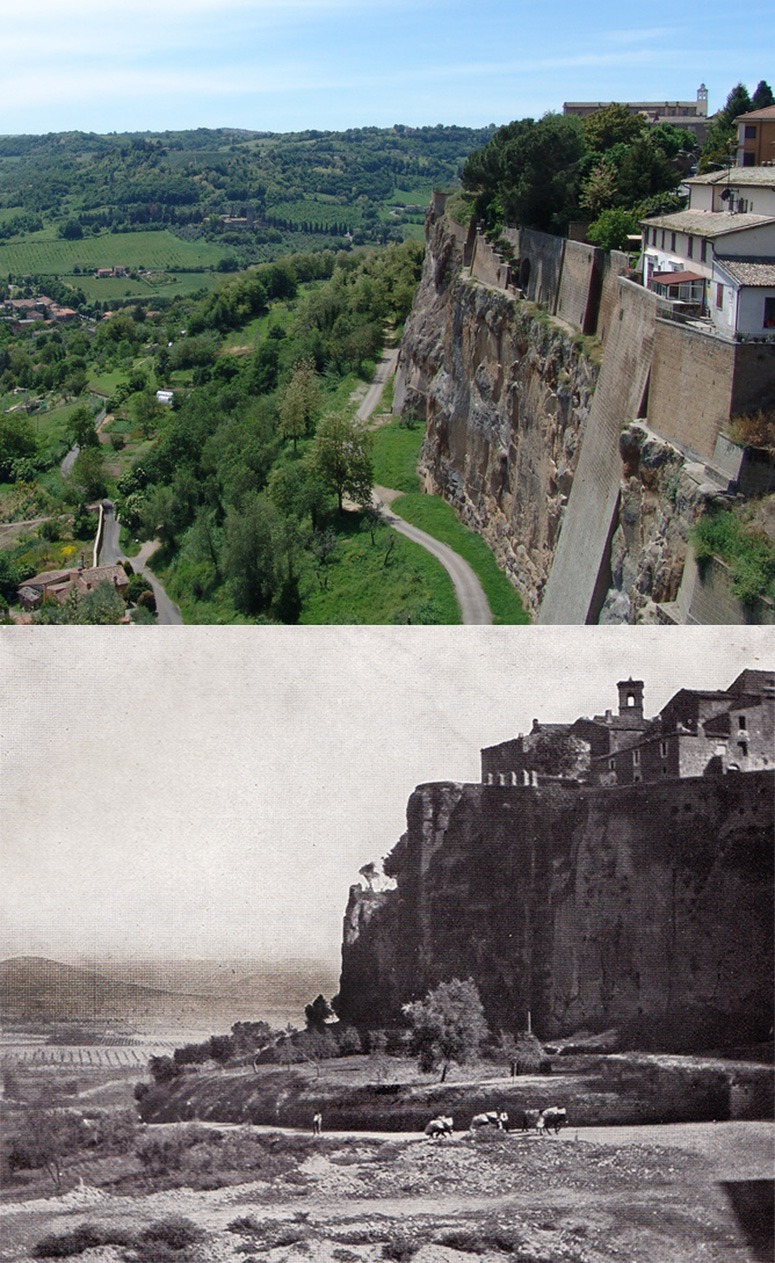
Orvieto, in Umbria, Italy, shown about 80 years apart. The views are not quite the same, though the campanile provides a reference point. The 1930s photograph has a Claudian air. The 2006 photo has less of a town:country contrast and the landscape is being suburanised. When walled cities had to defend themselves the presence of trees in the immediate vicinity was undesirable – and I think I would get rid of them now (for about 250m from the cliff. Thomas Aquinas once taught her and Orvieto used to control the road from Florence to Rome. There is a labyrinth of tunnels in the rock below the town. In 1840, a travel guide noted that ‘For the traveller not having his own carriage the best mode of proceeding will be by the diligence, which leaves Rome on the mornings of Tuesday, Thursday, and Saturday, and arrives at Viterbo early in the afternoon. At daybreak on the following morning, a carriage that conveys the mail, not the cleanest or most comfortable of vehicles, starts for Orvieto, and arrives there about 11 o’clock, giving him sufficient time to vist that interesting city on the same day.’
(2006 photo courtesy pshanson)
Assisi fountain then and now
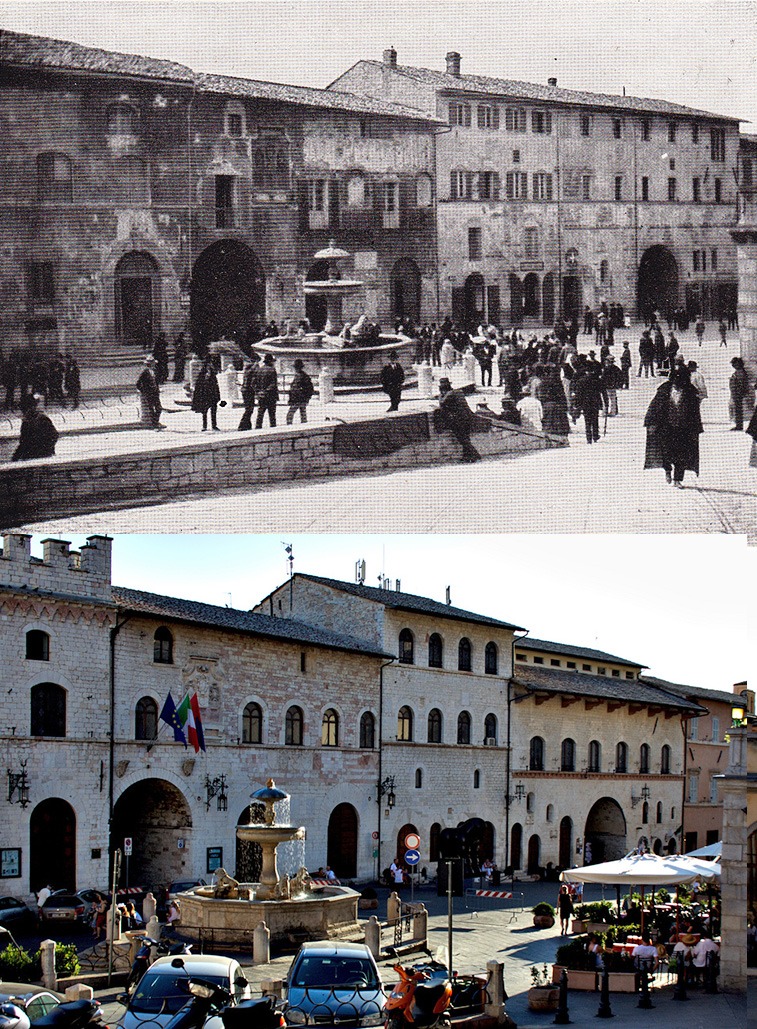 These photographs of Assisi’s urban landscape and architecture were taken about 80 years apart. It’s great to see how little has changed (probably ‘thanks to St Francis’ for attracting tourists) but the changes seem to be for the worse: cars, masts for TVs and phones, ugly street signs, heritage lighting, extra downpipes, less picturesque clothing, some odd castellations (top right). Readers are invited to contribute ‘then and now’ pairs of illustrations so that we can keep an eye on how gardens, parks, urban landscapes and rural landscapes are changing. Let’s hope we can find some examples of things getting better.
These photographs of Assisi’s urban landscape and architecture were taken about 80 years apart. It’s great to see how little has changed (probably ‘thanks to St Francis’ for attracting tourists) but the changes seem to be for the worse: cars, masts for TVs and phones, ugly street signs, heritage lighting, extra downpipes, less picturesque clothing, some odd castellations (top right). Readers are invited to contribute ‘then and now’ pairs of illustrations so that we can keep an eye on how gardens, parks, urban landscapes and rural landscapes are changing. Let’s hope we can find some examples of things getting better.
(2012 photo of Assisi courtesy of preston rhea)
Placemaking for 34 great waterfront urban landscapes
I admire the Public for Public Space and I like this video, even if it is too long. Also, I mostly agree with the criticisms of landscape architects and the other design professions. What I regret about the film is the detachment from design theory.
Fred Kent’s answer to the question ‘What Makes a Great Place?’ is (1) sociability (2) uses and activities (3) comfort and image (4) access & linkage. It is not wrong but it is muddled. Fred Kent should have begun with Vitruvius and had he done this the list might have been re-organized as follows (1) commodity: uses, activities, sociability and comfort (2) FIRMNESS: construction and planting supporting a healthy ecosystem, with access and linkage for humans and other species (3) DELIGHT, or, as Vitruvius put it VENUSTAS – his word extends to all the aesthetic qualities associated with Venus, rather than the marketing-mens’ word ‘image’.
Some acquaintance with design history might also have yielded the fact that Lancelot ‘Capability’ Brown described himself as a Place Maker.
Landscape Nicaragua
Having lived for the past four years in rapidly developing countries, I have become interested in living in a slowly developing country. Nicaragua is the poorest country in Central America, according to the UN 48% of its population live below the poverty line, 80% on less than US$2 per day. Nicaragua has the greatest percentage of its area devoted to National Parks of any of the Central American states. The civil war of the 1980´s and the American government´s subsequent funding of armed groups opposed to the Sandinista faction has resulted today in a war-weary and cynical population (memorials to the asassinated are a commonplace, found even in rural school playgrounds), which with 48% underemployment does not show itself as optimistic with regard to the future, or indeed the present. An ideal place then, to adjust one´s professional and private view away from the serving of Mammon to something, perhaps, more useful.
I have visited two biological stations in the two months I have been here, one based in the National Park of Laguna de Apoyo, the other in the National Park Penas Blancas. The first is part of Nícaragua’s astonishing lowland landscape of extinct and active volcanoes, many of the extinct ones now deep lakes, the second part of the upland landscape of cloud forests. Both are staffed by volunteers, living conditions are very simple, morale is high, the people are mainly young and all enthusiastic. The stations have specialities, at Apoyo it´s the endemic lake fish, at Penas Blancas it´s bees and orchids: both stations though interest themselves additionally with the widest range of the flora and fauna which surrounds them. Both are also primarily involved in simply finding out what is there and how it´s changing, there is little hard information to be had at the most basic level, they are collecting much raw data that no one has taken the time to do before. One meets Dutch and German students, either self-funded, or on government grants, but local people are the backbone of the effort. For young people (and older ones, too) tired of boring jobs, lack of motivation and opportunity and wanting to make a positive contribution to something, somewhere, this would be a place to come. Get dirty, get bitten, work hard, rise early, sleep early, learn Spanish and be part of a collective, forward-looking group of people: where in recession-ridden Europe is all of that on offer?
Scotland's landscape & architecture Trumped by Alec Salmond and the SNP
I lived round the corner from one of the founders of the Scottish National Party for 20 years and supported the idea of an independent Scotland. Wendy Wood was the daughter of a landscape painter, and an artist herself. Like me, I think she would have withdrawn her support from the SNP if she had known it would lead to the destruction of Scotland’s landscape. There are good landscape architects in Scotland but a friend told me that the major part of their workload is now supporting, and opposing, the construction of windfarms. The turbines are pork barrels – ways of giving subsidies to local people to buy their votes.
The Arbroath Delcaration, addressed to the Pope in 1320 stated (here in a brilliant translation from the Latin) the wish to be independent ‘Yet if he should give up what he has begun, and agree to make us or our kingdom subject to the King of England or the English, we should exert ourselves at once to drive him out as our enemy and a subverter of his own rights and ours, and make some other man who was well able to defend us our King; for, as long as but a hundred of us remain alive, never will we on any conditions be brought under English rule. It is in truth not for glory, nor riches, nor honours that we are fighting, but for freedom — for that alone, which no honest man gives up but with life itself. ‘. Wood, like Roger Casement, was of English stock. The declarators of 1320 were proud of their descent: ‘Most Holy Father and Lord, we know and from the chronicles and books of the ancients we find that among other famous nations our own, the Scots, has been graced with widespread renown. They journeyed from Greater Scythia by way of the Tyrrhenian Sea and the Pillars of Hercules, and dwelt for a long course of time in Spain among the most savage tribes, but nowhere could they be subdued by any race, however barbarous. Thence they came, twelve hundred years after the people of Israel crossed the Red Sea, to their home in the west where they still live today. The Britons they first drove out, the Picts they utterly destroyed, and, even though very often assailed by the Norwegians, the Danes and the English, they took possession of that home with many victories and untold efforts; and, as the historians of old time bear witness, they have held it free of all bondage ever since. In their kingdom there have reigned one hundred and thirteen kings of their own royal stock, the line unbroken a single foreigner.’ Today, they do not want to be ruled by the Pope or the English. Far better, they think, to be ruled by Mamon and the Brussels Bureaucracy.
Trump International Golf Links hopes to become “the world’s best golf course”. Bill Forsyth made a wonderful film in 1983. Local Hero is about a small community in Scotland chose preservation of their landscape to riches from oil. Congratulations to the Guardian for its photograph (above) and to BBC2 for showing Anthony Baxter’s film You’ve been Trumped.
I’d like to see Salmond return to the land of his forebears: Greater Scythia. He will find lots of oil and even-more-ghastly development. With luck, he will be able to wrestle naked with other Scythians and enjoy Borat’s Cultural Learnings of America for Make Benefit Glorious Nation of Kazakhstan. Good luck to him – and good riddance for Scotland.
I would like to be able to boast that the UK landscape profession, led by the Landscape Institute Scotland Branch, has fought a bitter campaign against Trump golf course. But it hasn’t.
Conclusion: watch Local Hero with a tumbler of malt whisky. It will make you feel better.



